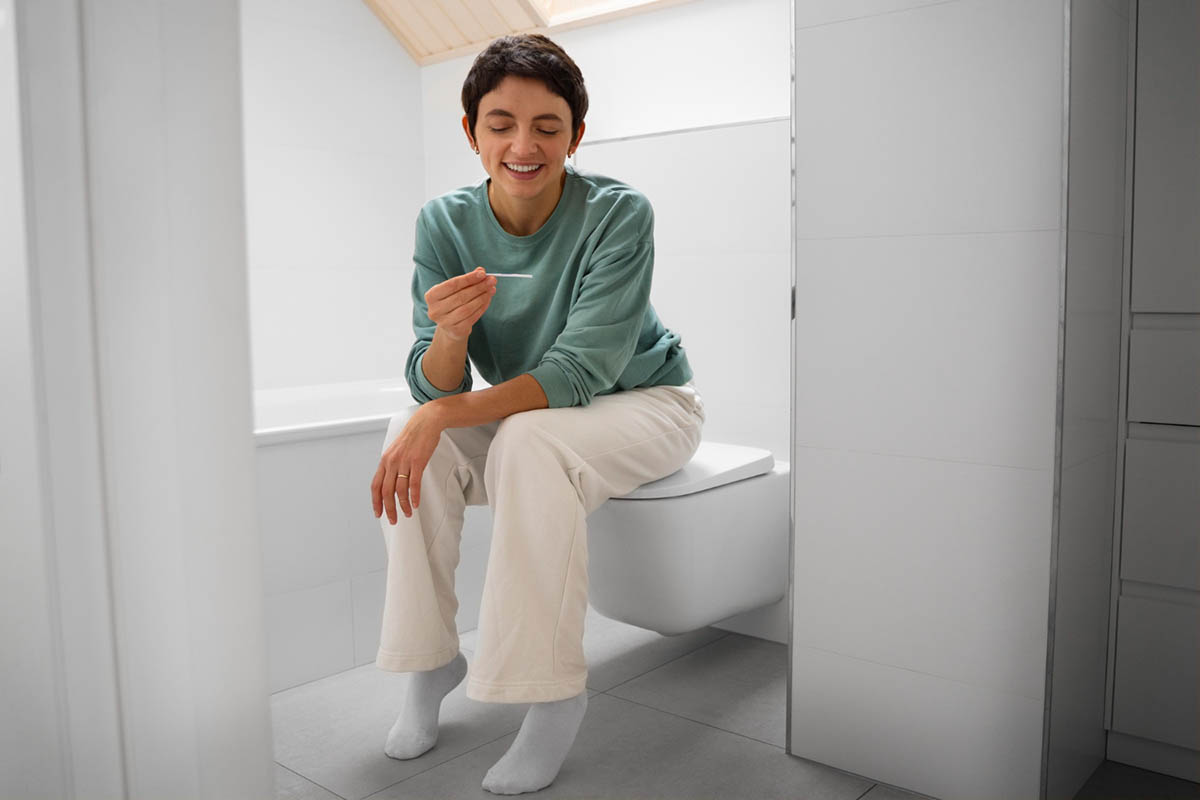Introduction
Overflow incontinence, a form of urinary incontinence characterized by the involuntary release of urine due to a full bladder, poses significant challenges to those affected by the condition. In this blog, we will look into overflow incontinence, its distinguishing features, causative factors such as prostate enlargement and pelvic floor weakness, symptomatic manifestations, and the spectrum of effective treatments available. By enhancing awareness and understanding, individuals can better manage their conditions and improve their quality of life.
What Overflow Incontinence Is?
Overflow incontinence, as the term suggests, occurs when the bladder, unable to empty properly due to issues like prostate gland problems or weakened pelvic muscles, becomes overly full. The body cannot effectively signal the need to urinate, resulting in continuous or intermittent dribbling of urine. This condition reflects a significant dysfunction in the flow of urine, contrasting starkly with other urinary conditions where the bladder might expel urine effectively but at undesirable times.
How Does It Differ From Other Types Of Incontinence?
Overflow incontinence is distinct from stress incontinence, which involves urine leakage due to exertion or physical activity increasing abdominal pressure, and urge incontinence, characterized by a sudden, intense urge to urinate followed by involuntary bladder contraction. Mixed incontinence combines symptoms of both stress and urgency incontinence, while functional incontinence arises from physical or mental impairments that prevent timely bathroom access.
Recognizing these distinctions is crucial for accurate diagnosis and treatment by a primary care physician or through specialized overflow incontinence treatment options like the sling procedure or pelvic floor physical therapies. Understanding these common types of incontinence helps individuals and healthcare providers manage symptoms and improve quality of life more effectively.
Causes Of Overflow Incontinence

Understanding the causes of overflow incontinence involves a thorough physical examination to identify the underlying issues, which may vary between genders, including incontinence in women, often exacerbated by specific pelvic health challenges.
Accurate diagnosis is essential for managing the amounts of urine loss and effectively treating the leakage of urine to enhance the quality of life for anyone with the condition. The following are some of the most common causes of this overflow incontinence.
Impaired Detrusor Function
The bladder’s detrusor muscles may become underactive, failing to contract properly and leaving residual urine in the bladder. This condition, often assessed through urodynamic testing, can lead to constant dribbling of urine, a classic symptom of overflow incontinence.
Bladder Outlet Obstruction
Common in men with prostate conditions such as enlarged prostate or prostatic hyperplasia, this obstruction impedes urine flow. Rectal examination and urinary tract symptoms are crucial in diagnosing and managing this cause. Prostate cancer may also lead to similar blockages, necessitating thorough evaluation and potential surgical treatment.
Urinary Retention
The bladder might not empty fully, either from obstructions, such as bladder stones, or nerve damage affecting the bladder muscles. Urinary retention can be acute or chronic and requires immediate attention to prevent further complications.
Blockage in Bladder or Urethra
Causes can include scar tissue, urinary tract tumors, or urethral stricture. These blockages can severely restrict the flow of urine and are often addressed through surgical interventions or other procedures tailored to the specific type of obstruction.
Weak Bladder Muscles or Nerve Damage
Conditions like diabetes or spinal injuries can impair nerve signals that control the bladder, leading to incomplete emptying. Advanced diagnostics, such as sacral neuromodulation, may be employed to improve nerve function and bladder control.
Certain Medications
Some drugs, particularly those with anticholinergic effects, can interfere with bladder function. Patients experiencing side effects impacting their bladder should consult their primary care practice for a review of their medication regimen and possible adjustments.
To effectively manage overflow incontinence, it is helpful to keep a detailed bladder diary, noting the amounts and times of urine leakage. This record can help healthcare providers determine the most appropriate treatment, such as stress urinary incontinence techniques or urethral hypermobility interventions, and better understand the patient’s daily challenges.
What Are The Symptoms Of Overflow Incontinence?
Key symptoms include frequent dribbling of urine, a persistent feeling of fullness even after urinating, a weak urine stream, difficulty initiating urination, and nocturia. These symptoms significantly impact daily activities and life quality, necessitating effective management strategies.
Treatment Options For Overflow Incontinence

Bladder Training And Pelvic Floor Exercises
- How It Works: These involve scheduled voiding times and exercises like pelvic floor muscle training to enhance sphincter control and reduce leakage.
- Effectiveness: Particularly beneficial for those with a combination of overflow and stress incontinence symptoms, these strategies help manage urine release and retention.
Medication
- How It Works: Medications may be prescribed to improve bladder contraction, adjust the muscle tone of the urethral sphincter, or modify nerve signals involved in bladder control.
- Effectiveness: Their success often depends on the underlying cause but can be significant when appropriately prescribed.
Surgery
- How It Works: Surgical interventions might remove obstructions or reconstruct the bladder and its outlets to facilitate better urine flow.
- Effectiveness: Often very effective, particularly for those with anatomical blockages or damage from pelvic surgery.
Catheterization
- How It Works: Intermittent or continuous catheterization can help manage urine flow directly from the bladder.
- Effectiveness: While effective in preventing overflow, it requires careful management to avoid infections.
Living With Overflow Incontinence
Adapting to life with overflow incontinence involves employing medical advice, utilizing absorbent products like adult diapers, and maintaining a healthy fluid intake to manage symptoms effectively. For many, especially those who have undergone prostate surgery or similar medical treatments, finding the right balance of fluid intake and usage of protective products can significantly improve daily comfort and manage the involuntary loss of urine more discreetly.
How To Prevent It From Leading To Overflow Incontinence?
Proactive measures to prevent the progression of overflow incontinence in adults include regular health care provider consultations, early intervention strategies, and maintaining pelvic floor health through regular exercise. Engaging in floor muscle exercises and possibly incorporating electrical stimulation therapies can strengthen the pelvic muscles, enhancing bladder control and reducing the risk of involuntary leakage. These preventive strategies are vital for sustaining urinary health and avoiding further complications.
Regain Control and Confidence with Life In Motion Physical Therapy
Life In Motion Physical Therapy specializes in customized therapeutic approaches to manage and treat incontinence, combining behavioral therapies, interventional therapies, and pelvic floor massage techniques. Our comprehensive programs are designed to enhance urinary tract function and support individuals struggling with bladder control, helping them regain confidence and control in their daily activities. By tailoring our services to meet the unique needs of each patient, Life In Motion Physical Therapy delivers effective solutions to improve overall urinary health and enhance quality of life.
Conclusion
Overflow incontinence is a specific type of urinary disorder characterized by the bladder’s inability to empty fully, often leading to involuntary urine leakage. When discussing what is overflow incontinence, it’s important to recognize that it frequently results from various physical conditions. Identifying the overflow incontinence causes is crucial as they can range from nerve damage affecting bladder control to obstructions in the urinary tract, such as an enlarged prostate or strictures. Understanding and addressing these causes are key to managing symptoms and improving quality of life.
Effective management of overflow incontinence involves a comprehensive understanding of its causes, symptoms, and treatment options. With appropriate medical and therapeutic strategies, individuals can achieve improved control over their condition, enhancing their overall well-being.
FAQs
What happens if incontinence is left untreated?
Untreated incontinence can lead to complications such as urinary tract infections, skin issues, and significant disruptions to daily life.
What are the first signs of incontinence?
Early signs include minor leaks during physical activities, sudden urges to urinate, and frequent nighttime urination.
Should I be worried if I can’t hold my pee?
Occasional difficulty may not be alarming, but regular or severe occurrences should prompt a visit to a healthcare provider for evaluation and potential treatment.
Cheers,
Logan Lynch
Owner & Head Clinician at Life In Motion Physical Therapy




